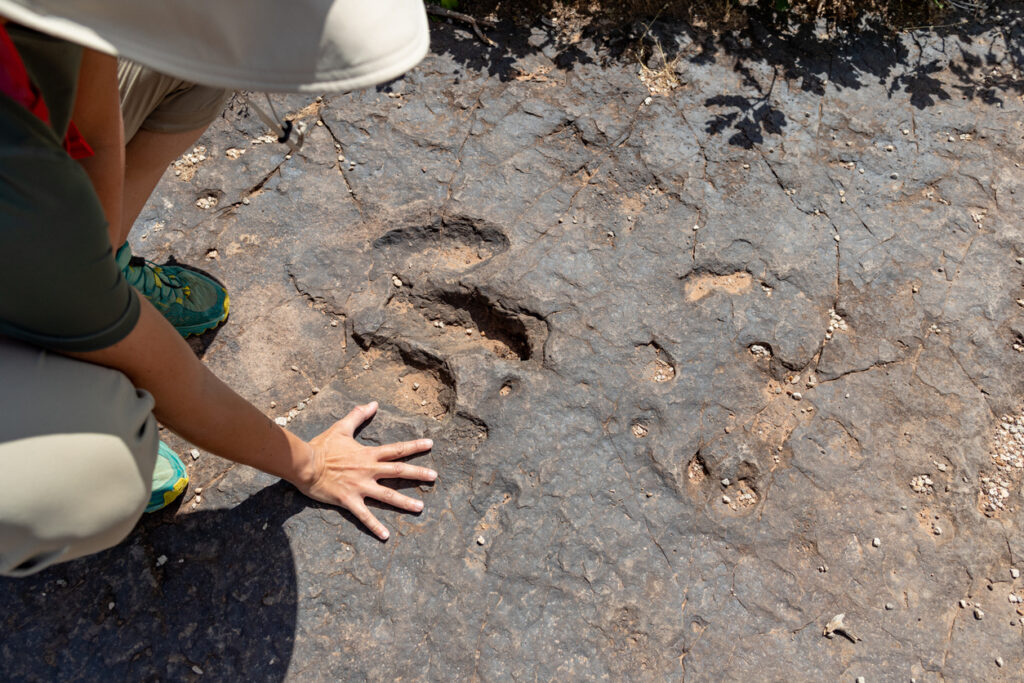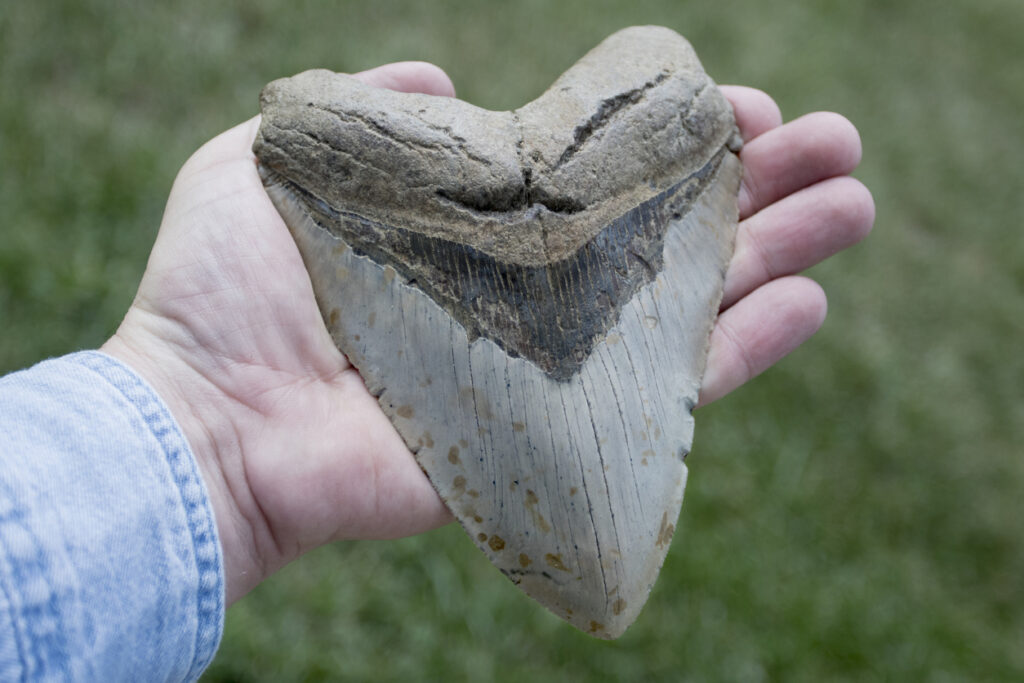Extinction is a part of the history of life – animals and plants disappear off the face of the Earth all the time. In fact, about 98% of all organisms that have ever existed are now classified as extinct. By understanding the reasons behind past extinctions, we can take steps to prevent another mass extinction and protect the species we currently share the world with!
What is a mass extinction?
When a species disappears quicker than it’s being replaced, this is called mass extinction.
At least 75% of the world’s species are lost during each mass extinction, which occurs in a short period – geologically speaking – of thousands or sometimes millions of years.
Mass extinctions occur when things like temperature changes, rising or falling sea levels and catastrophic natural disasters cause many species to be made extinct all at once. The most well-known example is the dinosaurs, which went extinct towards the end of the Cretaceous Period.
When species become extinct, eventually new or existing species will usually fill their role in the ecosystem, but this can often take thousands of years.
How many mass extinctions have there been?
There have been five known mass extinctions on Earth – which we’ll delve into below…
The Ordovician-Silurian mass extinction
The Ordovician-Silurian extinction is the first known mass extinction event, occurring roughly 445 million years ago.
Scientists believe it was caused by a significant drop in temperatures and the formation of giant glaciers, causing sea levels to drop drastically and changing the environmental habitats. This was then followed by a period of rapid warming, which was a drastic change in the other direction for the animals on Earth at the time.
In this mass extinction, around 85% of the world’s species were wiped out. This included many marine species, including brachiopod and bryozoan families most similar to what we know as clams today.
The Devonian mass extinction
Next up was the Devonian mass extinction, which happened around 372 million years ago.
During this period, Earth saw many environmental changes, including global warming and cooling, a rise and fall of sea levels and a reduction in oxygen and carbon dioxide in the atmosphere. It’s difficult to pinpoint the trigger for this extinction event because so many changes happened in such a short timeframe.
The Devonian mass extinction killed around 75% of the world’s species and roughly 20% of marine families. Creatures living in warm shallow seas, such as coral, ammonites and jawless fish, were particularly badly affected.
The Permian mass extinction
The third mass extinction event in history was the Permian mass extinction, occurring 252 million years ago.
At the end of the Permian massive volcanic activity in what is now Siberia spilled lava over vast areas. The activity released huge amounts of carbon dioxide from inside the earth and methane gas was also released from surface rocks, like coal when it encountered the hot lava. These greenhouse gases warmed up the atmosphere and the oceans became much hotter. Carbon dioxide would also have been dissolved into the oceans making them toxic and reduced the amount of oxygen which would have made it difficult to survive for many of the creatures living there.
This extinction event was the largest of the five, which is why it’s sometimes also referred to as the ‘Great Dying’. It wiped out more than 90% of species, including 95% of all marine species, including the trilobites, which had existed in the oceans for more than 250 million years.
The Triassic mass extinction

The fourth extinction event is called the Triassic mass extinction, which happened about 50 million years after the Great Dying.
Occurring around 201 million years ago, this extinction was likely to have been triggered by a string of geological activity which increased carbon dioxide levels and global temperatures, alongside increasing the acidity of the oceans.
Fewer species were wiped out by this mass extinction, but it particularly affected many land-based species. This paved the way for dinosaurs, which had not been common in the Triassic to become the dominant land animals in the Jurassic period after much of their competition was wiped out and the dinosaurs started to fill the empty niches. This made the Triassic mass extinction a significant event in the planet’s history.
The Cretaceous mass extinction
That brings us to the most recent of the mass extinction events from 66 million years ago – the Cretaceous mass extinction.
In this case, the cause was most likely an asteroid hitting Earth, specifically in the area we now know as Mexico. This was followed by tidal waves, forest fires, ocean acidification, and the blocking out of the sun by a global dust cloud. Many remaining species of plants would have died without the sun to photosynthesise, including plankton in the oceans, and this would have caused a collapse of the food chain, with herbivores unable to eat, and carnivores unable to find food as the herbivores died out.
Any remaining non-avian dinosaurs were wiped out with this mass extinction, along with 78% of the species on the planet. This included the T-Rex and Triceratops, and it wiped out the ammonites in the oceans.
How were mass extinctions discovered?
You might be wondering how we know so much about these events even though they were hundreds of millions of years ago. And really, there’s still a lot we can learn about the mass extinctions.
Everything we know about the creatures that once lived through these historic periods of Earth’s life comes from scientific records and studies of fossil records. These records are of land and marine fossils from all around the world, showcasing the biodiversity we have always had within the various environmental habitats.
5 animals that have survived mass extinctions

Some animals have survived despite others disappearing in mass extinctions. Let’s learn a little more about who these resilient creatures are!
- Jellyfish: These creatures have been around since before the dinosaurs, with scientists believing they’ve survived in our waters for at least 500 million years!
- Birds: The earliest known birds are thought to have evolved around 165 million years ago – or since the Late Jurassic period. Birds actually evolved from dinosaurs, and therefore are dinosaurs!
- Crocodiles: Stay a while, crocodile! They did just that, having survived the Cretaceous mass extinction, with crocodiles having evolved around 95 million years ago, but they are part of an ancient lineage which is much older than even the dinosaurs.
- Tardigrade: Also known as the ‘water bear’, this creature is thought to be the only survivor, having lived through each of the five mass extinctions. They can survive and adapt to extreme conditions, which has helped their species live on for so long.
- Mammals: Mammals and their extinct relatives have survived through several mass extinctions, with the Cretaceous mass extinction giving them a chance to become the largest dominant animals on land and in the oceans after the non-avian dinosaurs became extinct.
How can we prevent a sixth mass extinction?
It’s said that we are now in the grasp of a sixth mass extinction, known as the Anthropocene or Holocene mass extinction. Unlike previous events, this one is being caused by human activity. Deforestation, hunting, overfishing, climate change, pollution and the spread of disease all threaten the species currently living among us.
So, how can we slow it down? Doing our bit to help the environment and keep pollution low by making small changes to our habits and lifestyles can make a huge difference.
The following actions might not seem like much, but they could prevent further damage to the environment and more species from going extinct.
- Walking or taking public transport whenever possible
- Taking shorter showers to reduce water usage
- Picking up litter
- Recycling
- Learning about biodiversity and how to protect it
- Supporting conservation charities
Together, we can make positive changes to the environment and the species we share the planet with. For more insights on conservation, biodiversity and more topics, head to the Bristol Aquarium blog. You can also visit us to learn from our experts!
